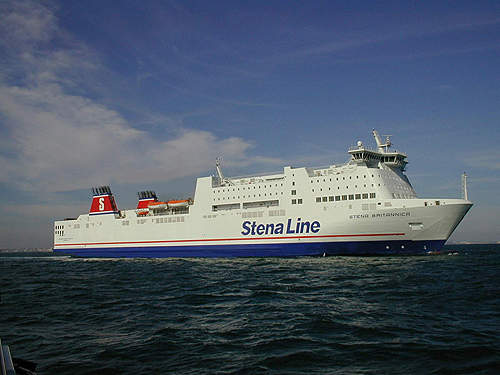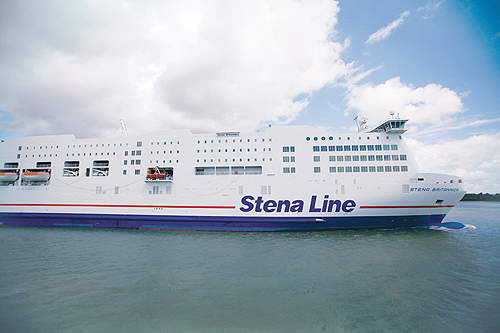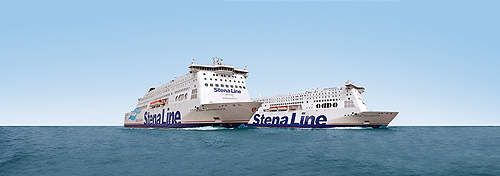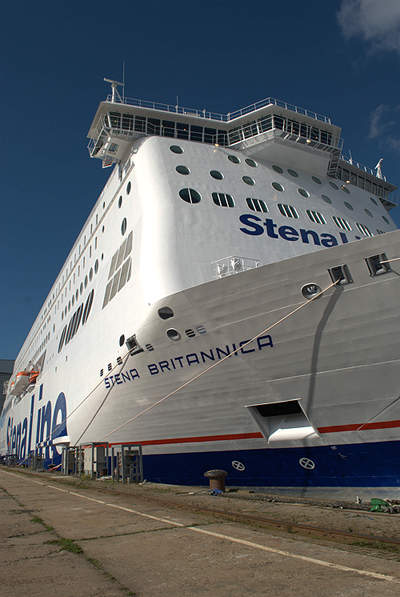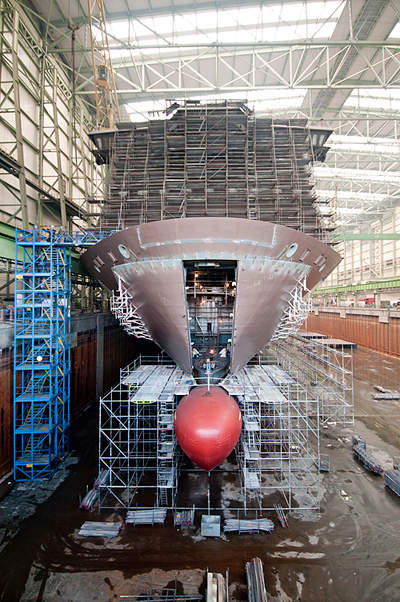Stena Britannica is the second of two RoPax ships built for Stena Line by Nordic Yards in Wismar, Germany. It entered service in October 2010, while its sister ship, Stena Hollandica, was delivered in May 2010.
The two ferries, considered the world’s largest combined freight and passenger ferries, were constructed at a combined cost of £375m ($594m), the line’s single largest investment to date.
Stena Britannica operates from Harwich in the UK to the Hook of Holland in the Netherlands.
Stena line has a fleet of 35 vessels and operates on 17 routes in the Irish Sea, the North Sea and Scandinavia.
Design and construction
The official construction of Stena Britannica began in July 2009 after a keel laying ceremony in Wismar, Germany.
The vessel was christened in October 2010 at Harwich International Port, UK. All Britannica’s interiors, including public and crew areas, were designed by Swedish design firm Figura.
The gross tonnage of Britannica is 62,000t and its deadweight is 11,600t. The ferry, which has a length of 240m and a width of 32m, can cruise at a service speed of 22kt.
Passenger capacity
Up to 1,200 passengers can be accommodated in 538 cabins. The surface area of the cargo deck is as big as three international standard football pitches. In addition to 230 cars, the ferry can also carry 300 freight vehicles.
A 7m-wide bow ramp and a 17m-wide stern ramp facilitate loading / unloading operations. An SAJ Instrument dynamic monitoring system will improve the cargo handling, fuel efficiency and safety of the vessel.
The vessel’s environmental impact was kept low with the incorporation off catalytic converters and engines with better combustion rates.
Other environmentally friendly features include radiant heat blocking solar film windows, and facilities to recycle cardboard, glass and food waste.
Staterooms
Stena Britannica’s 538 cabins are divided into 438 two-bed cabins and 100 five-bed cabins. The Captain’s Suite and Captain’s Class Cabins are outside VIP cabins furnished for two people. The Captain’s Suite has a separate living area.
The ferry also has a two-person cabin for disabled people.
Room amenities include coffee and tea making facilities, flatscreen television, free Wi-Fi internet access, a bureau with a writing case, towels, shower gel and a complimentary mini bar. These amenities vary from class to class.
Stena Britannica facilities
Stena Britannica has a children’s area with toys and games, and an area with video games for teenagers. The vessel also offers a cinema, shopping facilities and free Wi-Fi throughout the ferry.
The ferry has two restaurants: Metropolitan a la Carte Restaurant and Taste Restaurant, and three bars: Riva Bar, Taste Wine Bar and Barista Bar. A selection of complimentary snacks and beverages are offered at the Stena Plus lounge. There is also a coffee bar and an onboard Stena Shopping, which offers gifts, sweets, alcohol, tobacco and clothes.
Other entertainment venues include a Casino, C-View Lounge, News Room and Magazine Lounge, an Internet Room and a Sundeck Bar.
Propulsion and power
The ferry is powered by four medium speed diesel-mechanical engines, comprising two 7,200kW MAN 6L48 / 60CR and two 9,600kW MAN 8L48 / 60CR engines. Three 1,320kW MAN 6L21 / 31 engines and a 1,540kW MAN 7L21 / 31 medium speed diesel generator set provides auxiliary power. The ferry is also installed with two 3.1MW shaft generators.
The service speed of 22kt is achieved by two Alpha controllable pitch propellers. The two 3,000kW Wartsila bow thrusters and two Becker flap type rudders provide smooth and safe manoeuvring. Mitsubishi fin stabilisers are fitted to make the journey vibration free.

